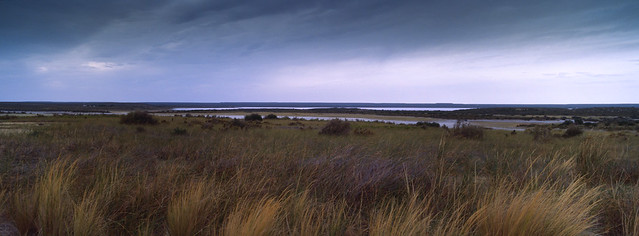in
Book Reviews , Wednesday, March 25, 2020
Whenever I travel, I keep an eye open for books by local photographers, on the grounds that they will almost certainly be full of photos better than I could ever make. Of course there are always garish anthologies of sub-postcard level stuff which manage the near impossible feat of being full of shots even less adequate than mine, but these I skip over. I’m more interested in the kind of book generally found tucked away in the corners, not those piled high for undiscerning tourists. Francisco Espíldora’s book, “Torres del Paine” is very clearly in the former category.

Francisco Espíldora is an award-winning Chilean wildlife photographer. I believe “Torres del Paine” is his first book, and it’s an impressive start. The classification “wildlife photographer” tends to make one think of highly detailed, close up animal portraiture, which is more about technique than expression. That’s not the case here, indeed it’s drastically not so. “Torres del Paine” is a narrative, taken the reader from pre-dawn to dusk in a wintery setting, through photos taken within the national park boundary. The initial photos are taken in near darkness, with just recognisable animal silhouettes seen in some of them. Stopping to think about it, from a technical point of view these really are quite remarkable, but more to the point they strongly convey a sense of time and place.

Moving on, light creeps in, and dawn-lit landscapes are mixed in, some with distant wildlife visible, some not. The colour palette is restrained, none of the exuberant saturation that a lot of wildlife, and indeed landscape photography goes in for. In fits in with a certain idea of “film-like”, provided you associate film more with the kind of subdued feel delivered by Fuji Astia, rather than the screaming psychedelia of Velvia. It’s a very appropriate look.
Further in, the wildlife does take more of a centre stage role, but still very much within or even concealed by the landscape, as opposed to somehow cut out of it. The narrative moves towards brighter midday and afternoon light, before finally returning to night.
Overall the book really feels like something much more than just a collection of photos, which is quite unusual in the genre. Francisco Espíldora clearly has a deep feeling for the land, and a story to tell. From a photographical point of view, his approach has some parallels with that of Vincent Munier, but without the extreme minimalism Munier tends towards (sometimes too much, for my tastes), or the impressionistic approach of Stanley Leroux, while remaining very individual.
I’m hardly an authority on wildlife photography, or indeed any kind of photography (or anything else, to be honest), but my feeling is that Francisco Espíldora is on a path to becoming a leading contemporary wildlife photographer. I strongly recommend this book, which you can buy directly here, and look forward to seeing more of his work.







